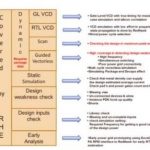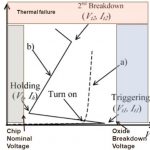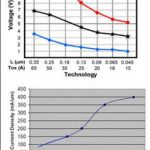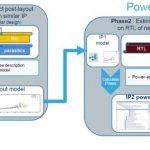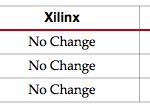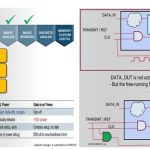Do we ever imagine what kind of severe challenges mission critical unmanned systems in air, land and underwater face? They are limited in space and size; have to be light in weight, flexible in different types of operations and at the same time rugged enough to work in extreme climatic conditions. That’s not enough; amidst these … Read More
How to Assure Quality of Power and SI Verification?
As power has become one of the most important criteria in semiconductor design today, I was wondering whether there is a standard set for the power verification for an overall chip. We do have formats evolved like CPF and UPF and there are tools available to check power and signal integrity (SI), however I don’t see a standard objective… Read More
Full Chip ESD Sign-off – Necessary
As Moore’s law keeps going, semiconductor design density on a chip keeps increasing. The real concern today is that the shrinkage in technology node has rendered the small wire geometry and gate oxide thickness (although fine in all other perspectives) extremely vulnerable to ESD (Electrostatic Discharge) effects. More than… Read More
Layout-based ESD Checking Methodology at Nvidia
The company Nvidiais synonymous with designing all things video and GPU, so I watched Ting Ku, director of engineering at an archived webinar today talk about: Comprehensive Layout-based ESD Check Methodology with Fast Full-chip Static and Macro-level Dynamic Solutions.… Read More
ST Endorses PowerArtist with ARM Cores & FDSOI libs
It was an interesting webinar I attended, presented by STMicroelectronicson how they are benefited in power saving and thermal dissipation by using FDSOI technology and also by using PowerArtist in their design. So, it’s an advantage from both sides – semiconductor technology and semiconductor design tool. It’s worth attending… Read More
Xilinx At 28nm: Keeping Power Down
Almost without exception these days, semiconductor products face strict power and thermal budgets. Of course there are many issues with dynamic power but one big area that has been getting increasingly problematic is static power. For various technical reasons we can no longer reduce the voltage as much as we would like from one… Read More
Low-Power Design Webinar – What I Learned
You can only design and optimize for low-power SoC designs if you can actually simulate the entire Chip, Package and System together. The engineers at ANSYS-Apachehave figured out how to do that and talked about their design for power methodology in a webinar today. I listened to Arvind Shanmugavel present a few dozen slides and… Read More
Reliability sign-off has several aspects – One Solution
Here, I am talking about reliability of chip design in the context of electrical effects, not external factors like cosmic rays. So, the electrical factors that could affect reliability of chips could be excessive power dissipation, noise, EM (Electromigration), ESD (Electrostatic Discharge), substrate noise coupling and… Read More
Low-Power Design Analysis and Optimization for Mobile and High-Performance Computing Applications
For several decades now consumers like me have enjoyed using mobile devices including:
- Transistor radios, my first one had just 6 discreet transistors in the 1960’s
- HP 21 Calculator, used in college with Reverse Polish Notation, circa 1976
- Zenith Data Systems laptop, with two floppy drives, 1980’s
- Palm Pilot V,
An EDA Acquisition that Worked
I first heard about Andrew Yang back in 1993 when he founded a Fast SPICE company called Anagram, then acquired by Avant! in 1996. Andrew’s latest EDA company Apache Design, Inc.was started in 2001, then acquired by ANSYS in 2011. Most EDA mergers simply don’t work because of one or more reasons, like:
- Incompatible



